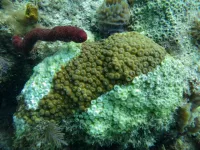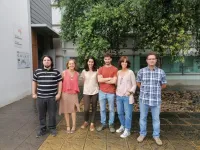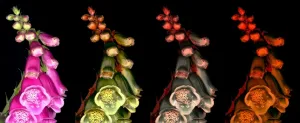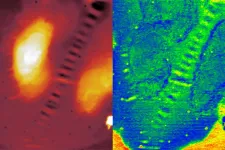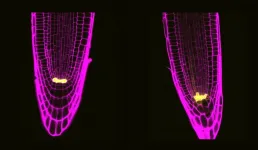From waste to wealth: Converting CO2 into butanol using phosphorous-rich copper cathodes
A team of scientists has reported an electrochemical reduction reaction pathway that can avoid *CO dimerization to produce 1-butanol from CO2 using copper phosphide as a cathode
2021-07-06
(Press-News.org) Human activities like the burning of coal and fossil fuels have caused CO2 to accumulate in the atmosphere, which has significantly affected the Earth's climate. As a result, several scientists are looking for ways to convert CO2 into other valuable organic products, such as 1-butanol, which has shown promise as an alternative fuel for vehicles. This could help reduce our dependence on fossil fuels.
One method of obtaining useful compounds is by the electrochemical reduction reaction (CO2RR). Researchers have developed metal-based catalysts that can fulfill this task. However, there is a caveat: most of these catalysts are expensive and produce a variety of products during the reaction, which can be difficult to separate.
To solve this problem, a team of researchers led by Prof. Dr. Jaeyoung Lee and comprising Mr. Minjun Choi, Dr. Jin Won Kim, and Prof. Sungyool Bong from the Gwangju Institute of Science and Technology in South Korea came up with a procedure that directly generates 1-butanol with the help of copper phosphide (CuP2) without first undergoing CO dimerization. "We are trying to develop a Cu-based electrode for electrochemical conversion of CO2 that avoids *CO dimerization and can help us increase the selectivity of the product so that additional power consumption from separation processes can be avoided," explains Mr. Minjun Choi, a Ph.D. student at the university and the paper's first author. Their research has recently been published in volume 6 (issue 6) of the journal ACS Energy Letters on 11 June 2021 and has been available online since 11 May 2021.
Even though numerous copper-based electrocatalysts exist today, this is among the first instances in which CuP2 has been used to develop an electrocatalyst that is highly product-selective. It induces a C-C coupling reaction and circumvents the formation of CO, which is known to be a critical intermediate for Cu-based systems. The researchers confirmed this by using surface-enhanced infrared absorption spectroscopy to show that their CuP2 electrocatalyst yielded the desired product, 1-butanol, with a remarkably high Faradaic efficiency of >3%.
The team is excited about the implications of their findings. "Our goal is to design new electrodes that are stackable, that can increase production rates, and that can promote conversion efficiency so that we can make our goal of converting and using CO2 as a fuel in reality," concludes Prof. Lee.
INFORMATION:
Reference
Authors: Minjun Choi, Sungyool Bong, Jin Won Kim, and Jaeyoung Lee
Title of original paper: Formation of 1?Butanol from CO2 without *CO Dimerization on a Phosphorus-Rich Copper Cathode
Journal: ACS Energy Letters
DOI: https://doi.org/10.1021/acsenergylett.1c00723
Affiliations: School of Earth Sciences and Environmental Engineering, Gwangju Institute of Science and Technology
About the Gwangju Institute of Science and Technology (GIST)
The Gwangju Institute of Science and Technology (GIST) is a research-oriented university situated in Gwangju, South Korea. As one of the most prestigious schools in South Korea, it was founded in 1993 and aims to create a strong research environment to spur advancements in science and technology and to promote collaboration between foreign and domestic research programs. With the motto, "A Proud Creator of Future Science and Technology," GIST has consistently received one of the highest university rankings in Korea.
Website: http://www.gist.ac.kr/
About the authors
Mr. Minjun Choi is a Ph.D. student of Electrochemical Reaction and Technology Lab (ERTL). He received a Master's degree in electrochemistry under the supervision of Prof. Dr. Jaeyoung Lee in 2019. His current research focuses on copper-based electrocatalysts for the production of high organic molecules from CO2.
Prof. Dr. Jaeyoung Lee is the vice director of the ERTL Center and is a prominent full professor at the GIST School of Earth Sciences and Environmental Engineering in South Korea. He obtained his doctoral degree (2001) under Prof. Dr. Gerhard ERTL at the FHI der MPG and FU Berlin, Germany. He was a senior scientist at the RIST/POSCO and KIST (2002-2007). His current research interests include fuel cells, water electrolysis, the creation of chemicals from CO2 and ammonia, and AI supported electrochemistry.
Dr. Jin Won Kim is a senior researcher and research assistant professor at the ERTL Center for Electrochemistry and Catalysis at the Gwangju Institute of Science and Technology (GIST). He is currently developing next-generation secondary batteries, such as all solid state batteries and lithium-sulfur batteries. CO2 electrolysis is also one of his research interests. In 2015, Jin Won Kim received a PhD in Environmental Science and Engineering from GIST.
Prof. Sungyool Bong is a research associate professor at the ERTL center for Electrochemistry and Catalysis at the Gwangju Institute of Science and Technology (GIST). His research is currently on fuel cells, CO2 conversion, and chemical energy conversion. In 2010, Sungyool Bong received a PhD in Chemistry from the Seoul National University.
[Attachments] See images for this press release:
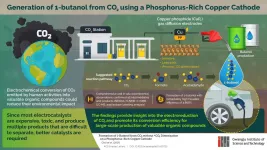
ELSE PRESS RELEASES FROM THIS DATE:
2021-07-06
MIAMI--A new study led by scientists at the University of Miami (UM) Rosenstiel School of Marine and Atmospheric Science is the first to document what coral genes are doing in response to a disease that is rapidly killing corals throughout Florida and the Caribbean. The findings can help to better understand coral immune system as new diseases emerge as the ocean warm.
The collaborative effort between researchers at the UM Rosenstiel School, Mote Marine Laboratory and the Smithsonian Marine Station is the first to document a gene expression response of corals to stony coral tissue loss disease and that the disease causes a shared immune response in at least two coral species -- mountainous star coral (O. faveolata) and great star coral ...
2021-07-06
Metal-organic frameworks (MOF) are crystalline porous organic-inorganic hybrid materials that, by filling its pores with guest molecules, can create functionalities through interactions between the organic-inorganic based frameworks of MOF (host) and its guest molecules. This host-guest chemistry has the potential to bring "designable" electrical properties, allowing for a material to be organized in ways never before possible - paving the way for the next-generation of thin-film smart devices.
"However, most MOFs exhibit poor electrical conductivity", states Professor Masahide Takahashi, ...
2021-07-06
Philadelphia and Santiago -A new study published in The Lancet Global Health showed that establishing safe nurse staffing standards in hospitals in Chile could save lives, prevent readmissions, shorten hospital stays, and reduce costs.
The study, by the Center for Health Outcomes and Policy Research (CHOPR) at the University of Pennsylvania School of Nursing, and the Universidad de los Andes - Chile School of Nursing, found very large variations in patient to nurse staffing across 40 hospitals located throughout Chile. Nurse staffing was significantly ...
2021-07-06
SAN ANTONIO -- July 6, 2021 -- Scientists have used data from the Southwest Research Institute-led Magnetospheric Multiscale (MMS) mission to explain the presence of energetic heavy elements in galactic cosmic rays (GCRs). GCRs are composed of fast-moving energetic particles, mostly hydrogen ions called protons, the lightest and most abundant elements in the universe. Scientists have long debated how trace amounts of heavy ions in GCRs are accelerated.
The supernova explosion of a dying star creates massive shockwaves that propagate through the surrounding space, accelerating ions in their path to very high energies, creating ...
2021-07-06
A research group at the University of Cordoba has conducted study focused on evaluating the potential of the Sentinel-2 sensor system's configuration to predict the amount of forage on permanent Mediterranean grasslands.
Pasture quality assessment in permanent grasslands is essential for their conservation and management, as it can facilitate real-time decision-making regarding livestock management. In this regard, the Sentinel-2 satellite constellation, launched in 2015, has proven to be a promising tool for permanent grassland monitoring. This is a sensor system developed by the European Space Agency (ESA) and that provides free and available data worldwide, with a review time of five days, and 13 spectral bands. The spectral configuration of Sentinel-2, ...
2021-07-06
Scientists from the European Molecular Biology Laboratory (EMBL) and the German Cancer Research Center (DKFZ) have presented a new method for generating metabolic profiles of individual cells. The method, which combines fluorescence microscopy and a specific form of mass spectroscopy, can analyze over a hundred metabolites and lipids from more than a thousand individual cells per hour. Researchers expect the method to better answer a variety of biomedical questions in the future.
Today, many biomedical disciplines focus their attention on the metabolites of individual cells. While in the past these were considered simply as degradation products or else building blocks for the synthesis of complex cellular molecules, ...
2021-07-06
Changes in the colour and intensity of light pollution over the past few decades result in complex and unpredictable effects on animal vision, new research shows.
Insect attraction to light is a well-known phenomenon, but artificial lighting can also have more subtle consequences for species that rely on night-time vision for their behaviour.
To explore these effects, University of Exeter researchers examined the impact of more than 20 kinds of lighting on the vision of moths, and birds that eat them.
The study found that elephant hawkmoth vision was enhanced by some types of lighting and disrupted by others, while the vision of birds ...
2021-07-06
While atomic force microscopy and scanning electron microscopy have already provided information on the morphology of bitumen surfaces in the past, for a long time it was not known whether surface and chemical composition correlate with each other. However, the chemical composition of the surface is of particular interest because oxidation processes take place there, triggered by oxygen-containing molecules in the air such as ozone, nitrogen oxides or hydroxyl radicals. The oxidation process accelerates the aging of the material - the bitumen becomes porous and damage develops.
The materials ...
2021-07-06
Metals with similar chemical properties are usually extracted together, which limits the opportunities to separate high-purity metals. To increase those opportunities, it's important to understand how different metal species act during the solvent extraction process.
Researchers from the Institute of Process Engineering (IPE), of the Chinese Academy of Sciences, have developed a new strategy to characterise polymeric transition metal species in acidic solution, which may help to separate those high-purity metals.
Their study, which was published in the KeAi journal Green Chemical Engineering (GreenChE) employed a high-resolution electrospray ionization ...
2021-07-06
A multidisciplinary research team, led by the CSIC biologist at CRAG, Ana I. Caño Delgado, and the physicist from the University of Barcelona, Marta Ibañes, has discovered that two plant stem cell proteins, known for their role in the correct development of the root, physically interact and regulate each other to avoid cellular division. The study, result of fifteen years of continued research carried out by the two researchers, reveals that these two proteins, known as BRAVO and WOX5, act in a specific manner in a small group of stem cells, and that their interaction is key to the plant's survival under genomic and environmental stress factors like extreme cold, heat, or floods. The results, obtained with the model plant Arabidopsis thaliana, have recently been published in the ...
LAST 30 PRESS RELEASES:
[Press-News.org] From waste to wealth: Converting CO2 into butanol using phosphorous-rich copper cathodes
A team of scientists has reported an electrochemical reduction reaction pathway that can avoid *CO dimerization to produce 1-butanol from CO2 using copper phosphide as a cathode

